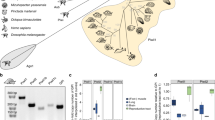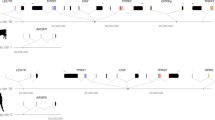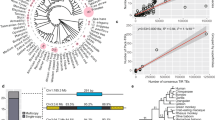Abstract
Pax proteins play a diverse role in early animal development and contain the characteristic paired domain, consisting of two conserved helix-turn-helix motifs. In many Pax proteins the paired domain is fused to a second DNA binding domain of the paired-like homeobox family. By amino acid sequence alignments, secondary structure prediction, 3D-structure comparison, and phylogenetic reconstruction, we analyzed the relationship between Pax proteins and members of the Tc1 family of transposases, which possibly share a common ancestor with Pax proteins. We suggest that the DNA binding domain of an ancestral transposase (proto-Pax transposase) was fused to a homeodomain shortly after the emergence of metazoans about one billion years ago. Using the transposase sequences as an outgroup we reexamined the early evolution of the Pax proteins. Our novel evolutionary scenario features a single homeobox capturing event and an early duplication of Pax genes before the divergence of porifera, indicating a more diverse role of Pax proteins in primitive animals than previously expected.
Similar content being viewed by others
Author information
Authors and Affiliations
Additional information
Received: 16 February 2000 / Accepted: 13 August 2000
Rights and permissions
About this article
Cite this article
Breitling, R., Gerber, JK. Origin of the paired domain. Dev Gene Evol 210, 644–650 (2000). https://doi.org/10.1007/s004270000106
Issue Date:
DOI: https://doi.org/10.1007/s004270000106




